Chestnut - a magnificent tree that often adorns parks and squares. In summer, it pleases the eye with oblong green leaves, and in autumn its fruits begin to ripen. All chestnut trees belong to the cedar family.
If there are suitable conditions, you can grow such a tree on your site. The healing and taste properties of chestnut leaves and fruits have been known for a long time. It is important to know how to properly prepare and eat them, or as a medicine.
Content
Horse Chestnut Description
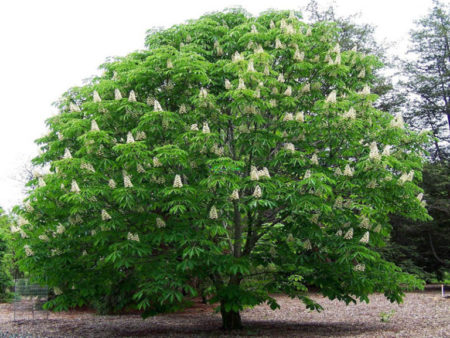
The height of this deciduous tree can reach up to 25 m. There are chestnuts that look like sprawling, perennial shrubs, no more than 1.5-2 m in height. The leaves are large, oblong in shape.
The flowers of the tree are similar in shape to bells. They are located asymmetrically, have a tart, but pleasant smell. There are many varieties of horse chestnut. Depending on the type, flowers can be of different shades. Most often, they are large, white, with a splash of pink or red. If you look closely at them, you will find that they look like old candles. Their diameter can be up to 2 cm. In the southern regions, flowers of chestnuts can be:
- red
- beige;
- white
- bright pink.
Large flowers form inflorescences of a pyramidal shape, with brushes located vertically. The calyx of each flower has five sepals, which grow together closer to the base. The stamen filaments are long, bent, and the pistil is formed by three carpels.
When the chestnut blossoms, he wears another outfit no less beautiful than his flowers. Leaves of chestnut in the autumn become different shades. They can be yellow, crimson, purplish red, and brown. The rich colors of foliage attract the attention of people who take beautiful photos of these magnificent trees. When fruits appear on the autumn chestnut, many people think about how healthy and tasty they are.
The horse-tree fruit looks like a round green box. Its length is from 6 to 8 cm. In appearance, it looks like a small green hedgehog, seated with prickly needles. Each fruit has three opening flaps and can contain from 1 to 4 nuts. The fruits of the chestnut ripen in the fall, the time of their ripening is September and October.
Flowering time
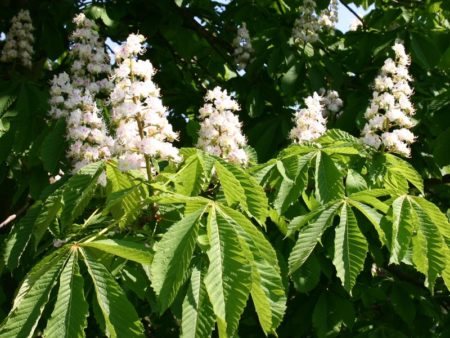
Like other trees, the chestnut tree begins to bloom in spring, but much later than they. In May, his kidneys swell and the first “bells” appear. May flowering is a big advantage for the tree. It helps flowers to avoid spring frosts, so chestnut nuts always ripen on time. The duration of flowering is from 2 to 3 weeks. After that, bright green walnut ovaries appear, which finally mature by autumn.
Where does chestnut live?
The birthplace of this tree is considered to be Europe or Australia. Specialists made a description of about 30 species of chestnut trees. They can be found in different parts of the world:
- in France;
- in Spain;
- in Italy (and in the Alps);
- in Croatia;
- in the Balkans;
- in the southern district of Switzerland;
- in the Caucasus;
- in Asia Minor;
- in Persia;
- in South Africa.
Chestnut also grows in North America. He feels best of all in the conditions of a temperate climate, on the loose and nutritious earth.
It is known from history that the horse chestnut tree was first brought to Constantinople in 1557. After that, he was transported to Austria, from where it quickly spread throughout the European continent. In Russia, chestnuts are cultivated in St. Petersburg, Moscow and other megacities. Chestnuts are resistant to the harsh conditions of large cities, so they are most often used for large group landings.
During the first ten years, growth in chestnuts is slow. The period of intensive growth is observed at the age of 10 to 25 years.
Chestnut in landscape design
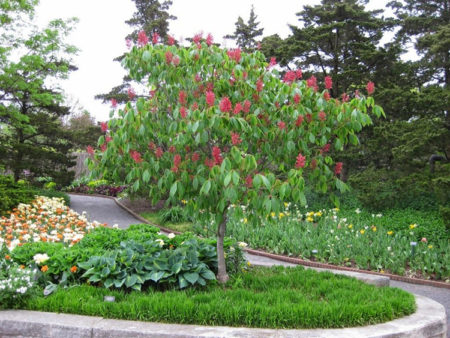
Chestnut can be planted separately or organize a group planting of these trees. Chestnuts are often decorated with:
- streets;
- large roads;
- garden paths;
- park alleys.
What kind of trees get along well with a chestnut? These are spruce, pine and other types of conifers. He is also planted near birches or acacias. Gardeners often place one chestnut tree in the middle of a large lawn or large meadow. When it grows, people are saved from the scorching rays of the sun in its great shadow. Under the majestic crown, the relaxation area will perfectly fit: you can put a deck chair, a hammock or a table with benches nearby.
Chestnut trees are to the liking of many gardening lovers, but not every plot is suitable for planting them. If this is a small summer cottage from 6 to 12 acres, it will not be suitable for planting a chestnut. These trees have a powerful root system that needs a large space. Chestnuts are unpretentious for watering and care: for their successful growth simple agricultural measures will be enough.
Chestnut and its use
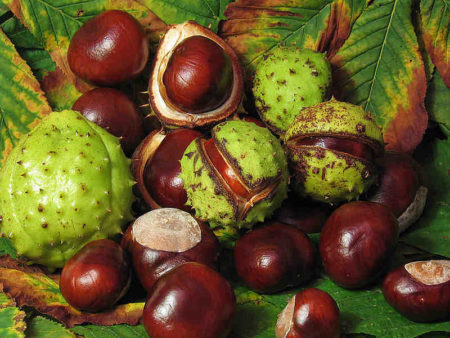
Chestnuts contain starch. They are also rich in fiber, glucose and vitamins. There is almost no fat in this nut, but it is very rich in carbohydrates. Their composition is about 60%. In addition to carbohydrates and fats, chestnuts contain proteins. The product is generously enriched with minerals:
- phosphorus;
- potassium;
- calcium
- sodium;
- magnesium
- copper;
- iron.
How to cook nuts
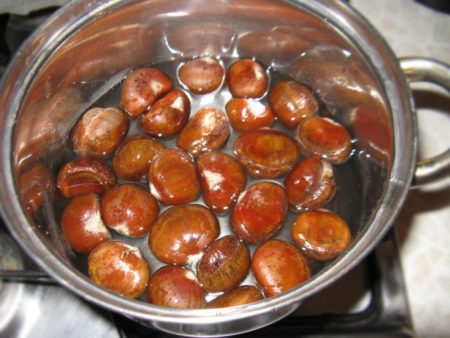
Cooking chestnuts is easy. It is important to know how to cook them correctly. The peel of each nut is carefully cut and dipped in boiling water. After 3 minutes, they are removed and cleaned of the film.
After preparatory measures, they begin cooking. Pour the nuts with cold water and cook for 20 minutes. When the fruits become soft, you need to drain the water, and wrap the saucepan with a warm cloth and insist for 5 minutes. It remains to add a little butter to the dish, and boiled chestnuts can be served to the table.
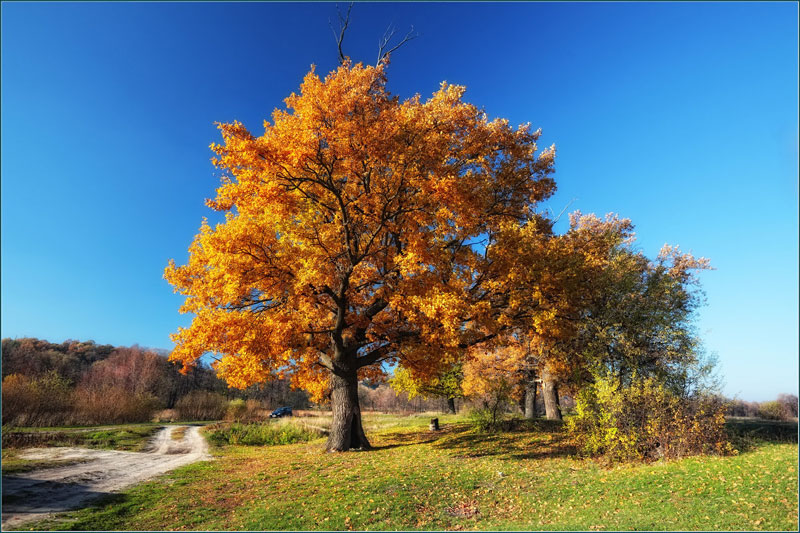 You may be interested in:
You may be interested in:Meat sauce
The fruit needs to be cleaned as before cooking. After that, they need to be placed in the meat broth and boiled in it for about 15 minutes. After softening the nuts, they are kneaded with a blender or using a crush. The finished sauce is flavored with nutmeg, cream or butter. You can add a little salt to it.
Autumn chestnut dessert
The nuts are cleaned and pre-processed, then dipped in a boiling mixture of milk and sugar. After softening the fruits, they are finely cut or mashed.
The natural strength of nuts
From chestnuts you can cook not only delicious dishes. Since ancient times, people have been using their amazing natural strength. Healers believe that with mastopathy, a gentle massage with a small nut helps well. The majestic chestnut is popularly revered as a sunny tree. That is why people carry its fruits in their pockets, fueled by inexhaustible natural force.
How rich is the autumn leaf of chestnut
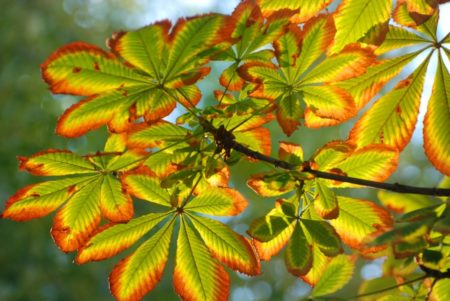
Chestnut leaves contain vitamins B and C, but this is not all the substances that they contain. Scientists have identified several complex triterpene compounds that help improve metabolism. The tannins contained in the leaves of chestnuts have a tonic and antiseptic effect. Pectins remove toxins and other breakdown products from the body. Also, the autumn leaf of the chestnut contains flavonoids. Flavonoids are substances that stimulate the synthesis of natural enzymes. In addition, foliage contains glucose, lecithin, organic matter, trace elements and vitamins.
Other foliage may not be suitable for medicinal use. Sowing chestnut is common in many regions of Russia. It is distinguished by the appearance of the foliage. It has an oblong shape and is slightly pointed at the ends. The length of the leaves of the seed chestnut is about 25 cm.
The collection of chestnut leaves for therapeutic use begins in August and ends in late September. The material must be evenly spread on the fabric to dry. In the first days of drying, the leaves need to be turned over so that they dry out evenly. Dried foliage is placed in dry containers and used throughout the year.
Chestnut leaf in folk medicine
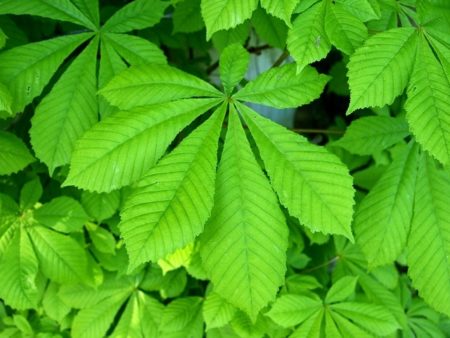
Chestnut foliage has a number of beneficial properties. It relieves cough, is an excellent diuretic. It is used for various types of inflammation, including for the purpose of healing wounds. They help with many conditions:
- high blood pressure;
- infectious diseases accompanied by intense fever;
- edema;
- pathologies of the gastrointestinal tract;
- obstruction of the respiratory system;
- pathologies of the hematopoietic system.
A wide spectrum of action of chestnut foliage is due to the fact that it contains many vitamins and minerals.
Useful tea for varicose veins
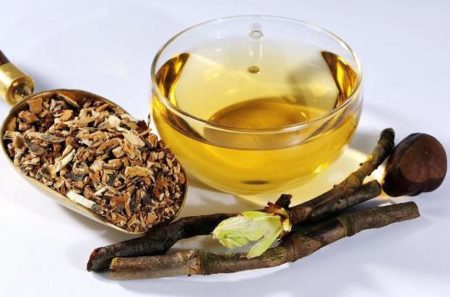
Using tea from chestnut leaves can reduce the signs of varicose veins. The crushed raw materials are poured with boiling water in a ratio of 1:15. Tea is insisted in a thermos for 4 to 5 hours. To achieve a therapeutic effect, they drink 400 ml of tea 2-3 times a day.
With uterine bleeding
Dry chestnut foliage will help women with uterine bleeding. A handful of raw materials is stirred in a glass filled with hot water, then boiled in a saucepan for 10-15 minutes. The broth is cooled to room temperature, then filtered through a sieve. You need to drink a little: 10 ml of liquid from 5 to 6 times a day.
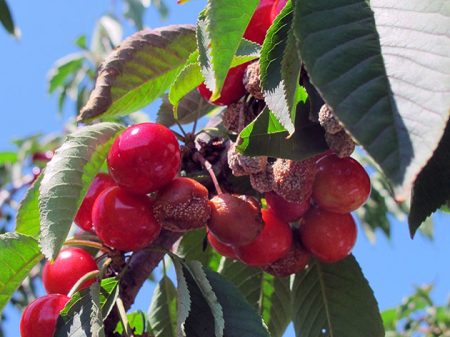 You may be interested in:
You may be interested in:Infusion from lipoma ("wen")
It is necessary to prepare an infusion for taking a bath. You will need a large bucket of 10 liters. Dry foliage is placed in it, poured with boiled water and insisted for a day. After infusion, the solution is filtered and poured into the bath. You need to take a bath for 15 minutes, with a repeat of the procedure after 2 days. The course of treatment is two weeks.
Cough medicine
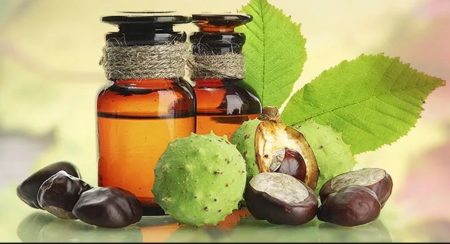
To get rid of cough, you need to take 10 g of dry chestnut leaves and finely crush them. Pour foliage with a glass of hot water, bring to a boil and insist 60 minutes. After insisting, the liquid is filtered and drunk a little during the day.You can also take this infusion one tablespoon three times a day. The course of treatment is 14 days.
The fruits and leaves of autumn chestnut have long been used in folk medicine and cooking. If you know the rules for the use of such raw materials, it will always bring health benefits.

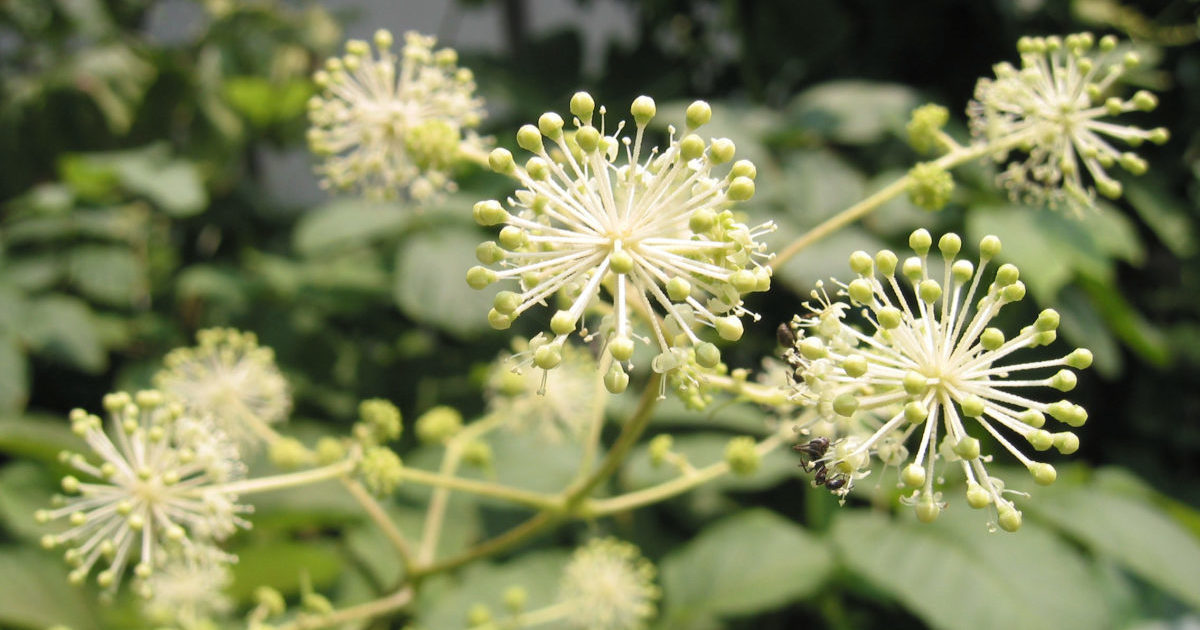 Aralia Manchurian - medicinal properties and contraindications, the use of tinctures in bodybuilding
Aralia Manchurian - medicinal properties and contraindications, the use of tinctures in bodybuilding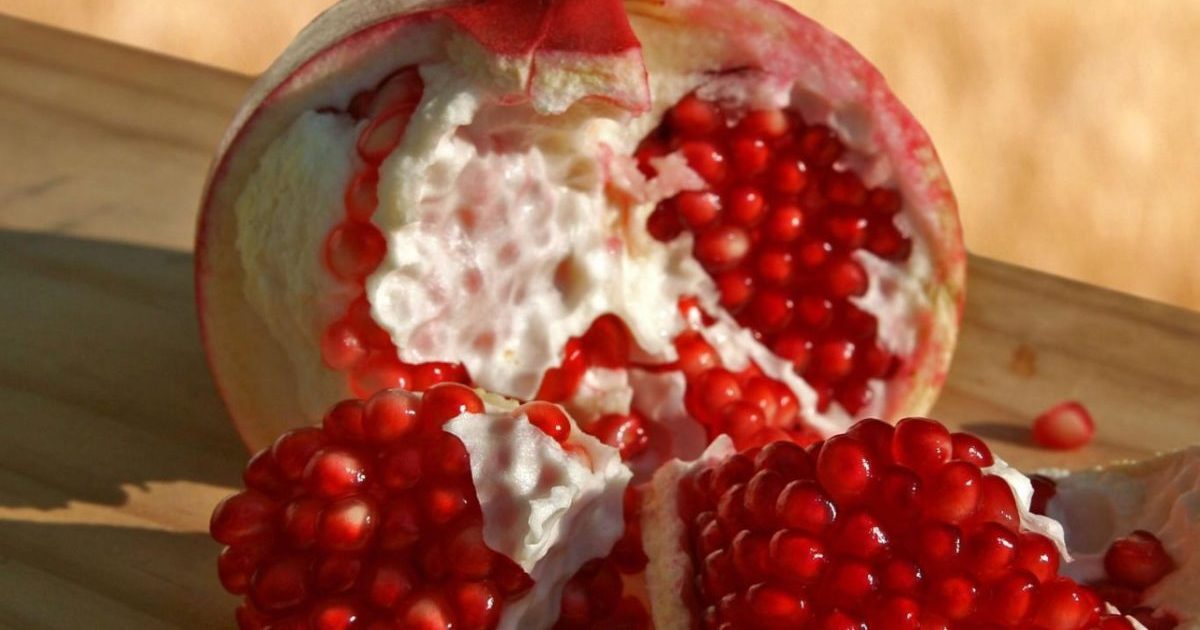 Seedless pomegranate - cutaway appearance, benefits and harms
Seedless pomegranate - cutaway appearance, benefits and harms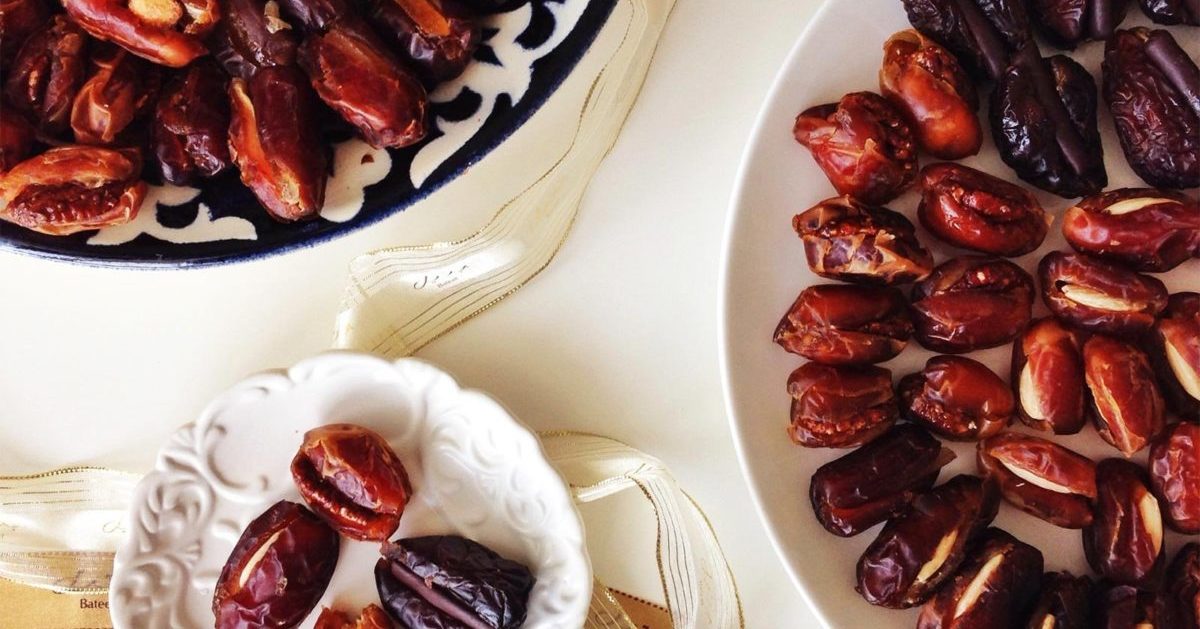 Dates - the benefits and harm to the body, how much you need to eat, properties and calorie content
Dates - the benefits and harm to the body, how much you need to eat, properties and calorie content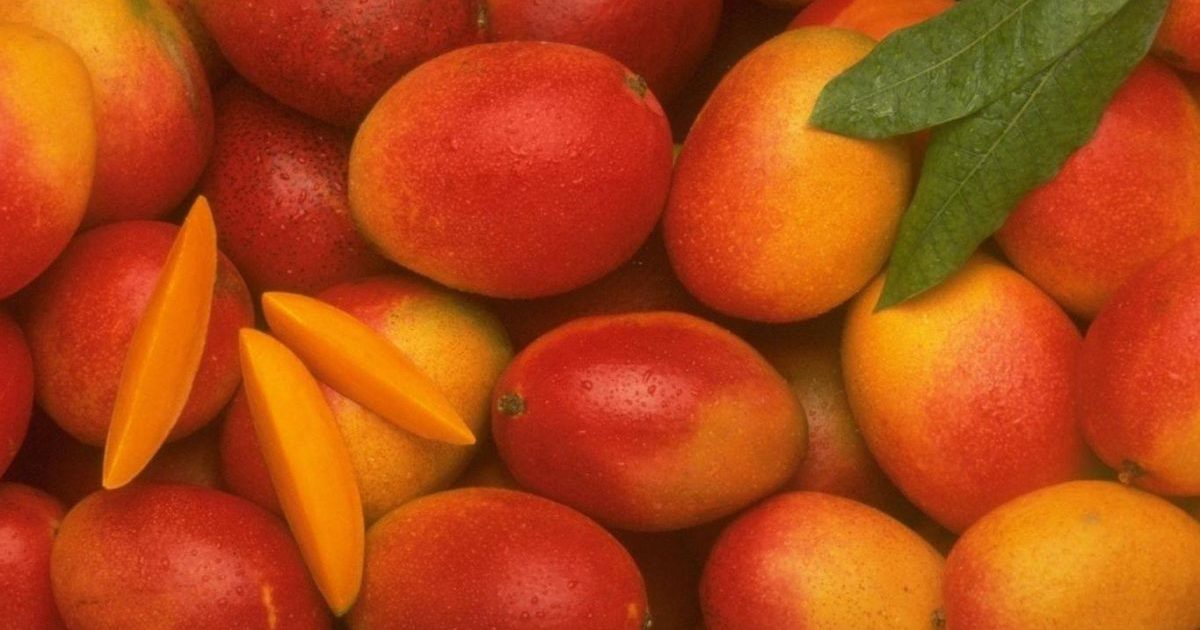 The benefits and harms of mango for the body of women and men - how to eat it?
The benefits and harms of mango for the body of women and men - how to eat it?